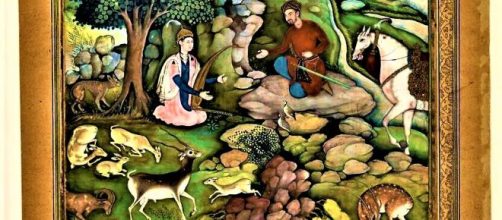Question: Since most of the paintings hanging in the 103,842 museums listed by UNESCO are made by men, do you have to be male to curate them? Prompting the question is a controversy that erupted last week at the New Orleans Museum of Art.
Problem de jour
The dustup was touched off by the appointment of Amanda Maples as curator of its African art collection. More than 4,500 people posted complaints on the museum’s Facebook page contending that Maples is the wrong pick because she is white.
If the New Orleans collection reflected black lives in America, a black applicants would be a logical choice to oversee it.
But unless the 4,500 people objecting to Maple’s race all hail from Africa, a black American is no more qualified for the job than Maples is.
Maples, who holds a doctorate in Art and Anthropology, has served as curated African arts at the North Caroline Museum of Art, and as guest curator at the National Museum of African American Art, Smithsonian Institution. Her research interests include African visual culture, Sierra Leone and Senegalese gold jewelry.
Charles Tatum, the museum’s of communications director, told the press that of all the applicants, Maples was the most qualified in African art history. The operative words, as I see it, are African art.
Repeat performance
A similar protest flared up in 2018 when the Brooklyn Museum hired Kristen Windmuller-Luna, a white woman to curate its African art collection.
In its defense, the museum touted her track record for innovating exhibitions of African art.
Maples would only say that she aims to “fill historical gaps in the museum’s extensive collection to tell the fullest story of African art.” To that end, she’s planning an exhibit called “New Masks Now: Artists Innovating Masquerade in Contemporary West Africa” in the belief that it will interest New Orleans given its Mardi Gras culture.
Insisting that only black people oversee African art is like saying that only Italians should curate Italian Renaissance shows or that you need to be French to direct Impressionist shows.
And if you take tribalism further, you might even object to my writing this column in the belief that a white art critic doesn’t fit the ethnicity of the work being discussed.
In that case, you might want to consider a review written by another white art critic, this one for the former Look Magazine, Charlotte Willard. I’m thinking of her analysis of a miniature painting made in 1559 in the court of the Mughal emperor of India - Akbar the Great.
Willard pointed out that the source of the painting is neither Indian nor Mongolian, but rather Ancient Persia, which she reminded us was for centuries the master of the Orient.
So great was the vitality of the Persian civilization, Willard wrote, that it conquered both Alexander the Great and later the Mongolian invaders. The Persian influence shines through the painting with its glowing colors.
Willard was neither Persian, Indian nor Mongolian, but she knew her art history and penned a knowing review by giving proper credit to the country that held sway over Indian art.
Isn’t that sort of scholarship what you want for a museum curator?
In a perfect world
Race doesn’t belong in this conversation. Matching ethnicity certainly didn’t guarantee acceptable results when it came to picking an artist to honor Martin Luther King and his wife. I’m talking about the creepy memorial of disembodied arms in an embrace by Hank Willis Thomas.
Picking by gender is equally foolhardy. Maggi Hambling’s incongruous nude statue honoring the 18th-century women’s rights pioneer Mary Wollstonecraft comes to mind.
Ideally, race and gender have no place in the art world.


